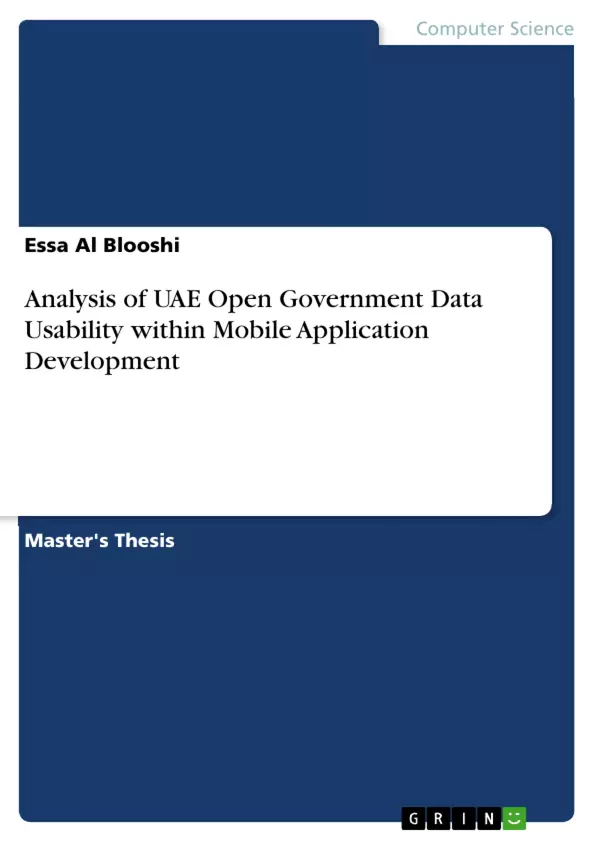The aim of this study was to determine the status of the United Arab Emirates’ Open Government Data usability within the mobile application development. This was done by reviewing the usability factors to develop a mobile application and assess the OGD datasets. An assessment instrument was designed by the researcher based on the reviewed usability factors, to assess the UAE OGD datasets.
From the study it was clear that major factors in mobile application development usability by OGD are data completeness, data format and support for developers by offering Application Programming Interface (API) and guides, majority of datasets were found to be complete an indication that UAE OGD has a strong point in data completeness. However, the current UAE OGD does not encourage the developers to build mobile applications because lack of data format support and missing of API and guides. Guidelines to improve the current UAE OGD have been proposed based on the results.
The civil society for a number of years has been pressing the government to produce machine readable presentations of the collected data. One of the greatest Open Government Data (OGD) goal was to aid developers come up with mobile application that can improve citizen’s live and in turn also enhance the country’s economy. Mobile applications forms a powerful channel to serve and reach businesses and citizens, hence the study aims at analyzing and evaluating the present UAE OGD usability for developing mobile applications that can be used to aid UAE through identification of current OGD weaknesses and the needed solution.
Inhaltsverzeichnis (Table of Contents)
- Introduction
- Background
- Research Problem
- Research Questions and Objectives
- Motivation and Importance of the Research
- Organization of the Dissertation
- Literature Review
- Open Government Data
- Open Government Data Internationally and in the UAE
- The US OGD Portal
- The UK OGD Portal
- The UAE OGD Portal
- Smartphones and Mobile Applications
- Benefits of Mobile Applications for Open Government Data
- The Status of Mobile Applications in the Context of Open Government Data
- Factors that Support the Usability of Open Government Data within Mobile Application Development
- Data Completeness
- Data Accessibility
- Data Utility
- Data Format
- Conclusions on Factors Supporting Usability
- Research Methodology
- Overview of the Assessment
- Assessment Instrument
- Section 1: Data Completeness
- Section 2: Data Accessibility
- Section 3: Data Utility
- Section 4: Data Format
- Dataset Sample and Selection
- Pilot Study and Timeframe
- Data Collection Method
- Results
- Data Completeness
- Data Accessibility
- Registration Required to Access the OGD Datasets
- Terms and Conditions for Accessing and Reusing the OGD Datasets
- The Application Programming Interface (API)
- Data Utility
- Location-Based Information
- Consistency of Data Identifiers
- Availability of Metadata
- Data Format
- Discussion
- Major Findings
- Recommendations and Guidelines to Improve UAE Open Government Data
- Citar trabajo
- Essa Al Blooshi (Autor), 2014, Analysis of UAE Open Government Data Usability within Mobile Application Development, Múnich, GRIN Verlag, https://www.grin.com/document/315213



